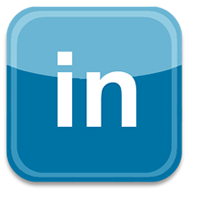The Green Sheet Online Edition
January 1, 2013 • 13:01:02
Low fees may be lynchpin for tax refund card adoption
#photo3With the 2013 tax season underway, results from the U.S. Department of the Treasury's pilot program to evaluate the take-up rate of prepaid cards as a delivery mechanism for federal tax refunds suggest that programs with low fees will experience higher take-up rates. The Urban Institute appraisal of the pilot said that the prime target for tax refund prepaid cards – the unbanked – will more likely enroll in and use such cards when monthly fees are kept to a minimum or not charged at all.
The U.S. Treasury's Tax Time pilot, begun in January 2011, comprised roughly 800,000 individuals randomly chosen from a population of 8.3 million adults suspected of being in the low- to moderate-income categories (below $35,000 in household income). Through direct mail, the pilot offered them the MyAccountCard, a general-purpose reloadable prepaid card, to which tax refunds were loaded electronically, instead of mailing taxpayers paper check refunds.
Since the purpose of the pilot was to analyze how best to configure future tax refund programs, the recipients were given eight different "treatments" of the MyAccountCard, with different fee schedules and card features for each treatment.
Results
The September 2012 Urban Institute report, Tax Time Account Direct Mail Pilot Evaluation, said that 1,967 people out of the approximately 800,000 who received the offer applied for the card, making for a 0.3 percent take-up rate. The researchers noted that 0.3 percent is in line with average take-up rates for direct mail credit card offers.
The Urban Institute found that the most important factor that influenced individuals to enroll was the cost of the card. When people were offered a treatment that came with a $4.95 monthly maintenance fee, as opposed to a treatment that came with no monthly maintenance fee, the adoption rate was more than 40 percent lower.
According to the researchers, card usage also decreased when the card came with the maintenance fee. "The likelihood of using the card within the first six months of the pilot was 47 percent lower for people offered a card with the monthly fee," Urban Institute said.
Additionally, cardholders were 55 percent less likely to use the fee-attached card six months after the pilot was launched and 52 percent less likely to direct deposit tax refunds into the prepaid card accounts. "Implications for future efforts suggest that Treasury direct its efforts primarily toward offering an account with a monthly fee as low as possible (zero if possible), even at the expense of additional card features such as a savings account," the researchers said.
In practice
The Urban Institute also noted that a prepaid card upon which taxpayers only direct deposit tax refunds is of limited value to the government. "The expense of providing a taxpayer with a plastic card annually for this singular purpose would be greater than disbursing a payment via a paper check," the report said. That is why the Treasury Department is exploring other financial capabilities that can be added to future card programs, such as bill pay and cash withdrawal.
It seems the government is following the lead set by private-sector tax preparation specialists like H&R Block, which leverage their tax preparation services to entice customers to adopt GPR cards. H&R Block clients typically enroll at tax time for the company's Emerald Prepaid MasterCard and have tax refunds direct deposited to the card. The other financial product features on the Emerald Card then help H&R Block retain their GPR card customers over time.
In December 2012, H&R Block expanded the functionality of the Emerald Card to include mobile app and rewards components. The app allows cardholders to remotely deposit paper checks to the card; H&R Block said the service is performed in real time, so customers have access to funds immediately. The rewards feature provides cardholders with cash rewards for making purchases from select retailers using the Emerald Card.
The Emerald Card comes with savings account and credit line components, but charges no activation, monthly maintenance or purchase fees.
Whether you want to upgrade your POS offerings, find a payment gateway partner, bone up on fintech regs or PCI requirements, find an upcoming trade show, read about faster payments, or discover the latest innovations in merchant acquiring, The Green Sheet is the resource for you. Since 1983, we've helped empower and connect payments professionals, starting with the merchant level salespeople who bring tailored payment acceptance and digital commerce tools, along with a host of other business services to merchants across the globe. The Green Sheet Inc. is also a proud affiliate of Bankcard Life, a premier community that provides industry-leading training and resources for payment professionals.
Notice to readers: These are archived articles. Contact information, links and other details may be out of date. We regret any inconvenience.





